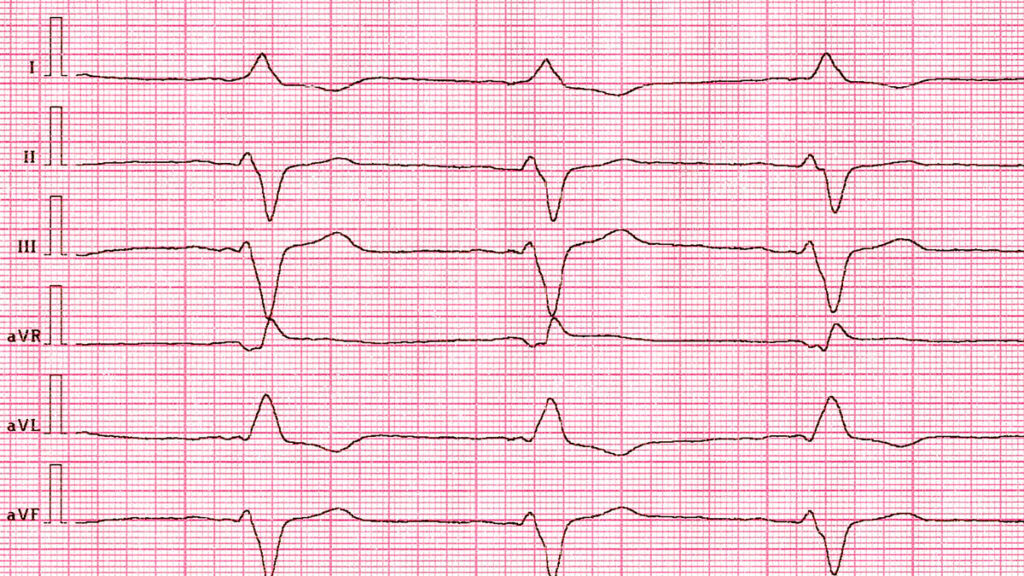Discover how advanced pacemakers with Atrial ATP therapy can bring relief from atrial flutter and tachycardia episodes.
Advancements in Cardiac Implantable Electronic Devices (CIEDs), such as pacemakers and implantable cardioverter-defibrillators (ICDs), have revolutionized the management of cardiac arrhythmias. Among these innovations, Atrial Anti-Tachycardia Pacing (Atrial ATP) has emerged as a critical feature for patients with atrial tachyarrhythmias, including atrial fibrillation (AFib) and atrial flutter. Atrial ATP is a proactive, non-shock therapy that can effectively restore normal heart rhythm while minimizing discomfort and improving quality of life for patients.
This article explains how Atrial ATP works, its benefits, and the role it plays in modern arrhythmia management.
What is Atrial Anti-Tachycardia Pacing (ATP)?
Atrial ATP is a pacing therapy delivered by CIEDs like advanced pacemakers or ICDs to interrupt and stop atrial arrhythmias. Unlike traditional shock therapies, Atrial ATP uses small, rapid pacing impulses to reset the heart’s electrical activity and restore a normal sinus rhythm.
When the device detects an episode of atrial tachycardia or atrial flutter, it responds automatically with targeted pacing to “capture” the heart’s rhythm. This intervention helps prevent prolonged arrhythmias and reduces the likelihood of the arrhythmia worsening into more severe forms.
How Atrial ATP Works
- Detection of Atrial Arrhythmias:
CIEDs continuously monitor the heart’s rhythm through implanted leads. When an atrial arrhythmia, such as atrial tachycardia or flutter, is detected, the device assesses the arrhythmia’s frequency and duration. - Delivery of Rapid Pacing Impulses:
Once the arrhythmia is confirmed, the device delivers a series of precisely timed electrical impulses at a slightly faster rate than the detected arrhythmia. These impulses aim to “reset” the atria and terminate the abnormal rhythm. - Return to Normal Sinus Rhythm:
In many cases, the rapid pacing interrupts the abnormal electrical circuits, allowing the heart to resume a stable sinus rhythm without the need for shocks or further intervention.
Key Benefits of Atrial ATP Therapy
For patients experiencing atrial tachyarrhythmias, Atrial ATP provides several important benefits:
- Non-Invasive Therapy: Unlike defibrillation shocks, Atrial ATP is a painless intervention that patients do not typically feel. It can stop arrhythmias without discomfort.
- Symptom Relief: By effectively terminating atrial arrhythmias, Atrial ATP can reduce symptoms like palpitations, fatigue, dizziness, and shortness of breath.
- Minimized Need for Shocks: In ICD patients, Atrial ATP can prevent arrhythmias from worsening into ventricular tachycardia (VT) or fibrillation, reducing the need for painful defibrillation shocks.
- Improved Quality of Life: Regular termination of arrhythmias helps patients live with fewer interruptions and greater confidence in their device’s ability to manage their condition.
- Automated, Timely Intervention: Atrial ATP is delivered automatically by the device, often stopping arrhythmias before they become clinically significant.
Who is a Candidate for Atrial ATP?
Patients with CIEDs, such as pacemakers or ICDs, who frequently experience atrial tachycardia, atrial flutter, or short episodes of atrial fibrillation can benefit most from Atrial ATP. This therapy is particularly effective for individuals who:
- Cannot tolerate antiarrhythmic medications or experience side effects.
- Require additional rhythm control alongside anticoagulation or cardioversion.
- Have frequent, self-terminating atrial arrhythmias that do not yet require more invasive procedures like catheter ablation.
Doctors determine a patient’s eligibility based on the type of arrhythmia, the frequency of episodes, and the specific capabilities of the implanted device.
CIED Advancements and the Future of Atrial ATP
The growing sophistication of CIEDs has expanded the capabilities of Atrial ATP therapy. Modern pacemakers and ICDs feature advanced algorithms that can:
- Adapt therapy to individual needs by adjusting pacing rates and patterns based on real-time data.
- Continuously monitor heart rhythms and provide remote data transmission, ensuring early detection of arrhythmias.
- Integrate with other therapies, such as ventricular ATP and defibrillation, for comprehensive rhythm management.
These advancements make Atrial ATP a critical tool for managing atrial arrhythmias and improving outcomes for patients with CIEDs.
Conclusion
Atrial Anti-Tachycardia Pacing (ATP) represents a significant advancement in atrial arrhythmia management. By delivering precise, automated pacing therapy, Atrial ATP restores normal sinus rhythm without discomfort, reduces symptoms, and minimizes the need for defibrillation shocks. For patients with CIEDs experiencing frequent atrial tachyarrhythmias, Atrial ATP offers a safe, effective, and proactive solution.
If you experience persistent arrhythmias or are considering a CIED to manage your heart rhythm, consulting with a specialist like Dr. Adam Budzikowski can provide the insights and guidance needed to explore this innovative therapy.
CRR
